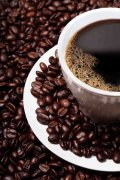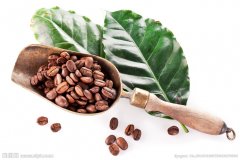"Mena reaction" caramelization reaction furan "to create caramel sweet black coffee
Furan "creates caramel sweet fragrance
It wasn't until 1926, when two leading scientists, Tadeus Reichstein of Switzerland and Hermann Staudinger of Germany, led the study, that the mystery of coffee aroma was first uncovered. After 1950, the two men won the Nobel Prize in Medicine and the Nobel Prize in Chemistry for their outstanding contributions to science. The two masters can be called the ancestors of coffee chemistry.
Reichstein and Stoddinger's research report in 1926, for the first time revealed that furans (Furans), alkyl pyrazines (Alkylpyrazines), diketones (α-diketones) and sugar base mercaptan (Furfuryl mercaptan) and other 29 kinds of compounds are the main components of coffee aroma, of which furan compounds are the most important, coffee caramel, nuts, cream, almond and even fruit sweet aroma, are related to "furan" compounds.
In the difficult environment without the aid of "gas chromatography-mass spectrometry"(GC-MS), the two masters have found more than ten furans in coffee beans. Now scientists use GC-MS and other instruments, and coffee beans have identified more than 100 kinds of furan compounds, but not all of them are fascinating, some furan compounds smell very irritating.
Nans were thought to be the product of caramelization and the main source of medium baked caramel flavor. However, in recent years, scientists have found that the generation of coffee aroma does not rely entirely on caramelization, there are many furan compounds are reduced by fat, and even monosaccharides (reducing sugars) interact with amino acids, that is, the famous Mena reaction is the protagonist of generating richer furan compounds, so caramelization alone cannot explain the aroma process of coffee roasting, Mena reaction is the birth of coffee fragrance.
"Mena reaction" wins "caramelization"
"Mena reaction" refers to a series of degradation and polymerization reactions between monosaccharide carbohydrates (glucose, fructose, maltose, arabinose and lactose) and proteins (amino acids), and the color will also become dark. It was discovered by French scientist Mena (Louis CamilleMaillard) in 1912.
"Caramelization" only ends in the "oxidation" or "browning" reaction of sugar heating,"Mena reaction" has a wider range, all kinds of monosaccharides and amino acids react at different temperatures, will produce a more complex aroma, far more complex than caramelization, because caramel ingredients in the furnace temperature continues to increase, again degraded and polymerized with amino acids into pyrazine heterocyclic aromatic compounds, which is the source of chocolate flavor. However, caramelization is often mistaken as the main source of coffee sweet fermentation, ignoring the more important Menard reaction, which is more easily understood and rarely associated with the more complex name of Menard reaction.
Remember that the nutty, almond, creamy and chocolate aromas of roasting come from the Mena reaction, not caramelization. In other words, coffee that is caramelized without the Mena reaction has a monotonous sweet and bitter flavor, not a multi-flavor drink.
The nuts and many sweet aromas in SCAA's flavor wheel are classified as caramelization, which seems to simplify the sweet aroma formation somewhat, and the addition of the Menard reaction here can make the true results closer to the truth. Caramelization and Mena reaction under the "smell spectrum", can be classified into three flavor: nut rhyme, caramel rhyme, chocolate rhyme, such as the following table.
1. Nut rhyme: stone fruit and wheat tooth
Drupe: almond, peanut, walnut
Wheat: corn, rice, grain, toast
2. Caramel rhyme: candy and syrup flavor
Candies: toffee, hazelnut, licorice
Syrup: honey, maple syrup
Chocolate rhyme: dark chocolate and cream chocolate
Dark chocolate: bitter chocolate, Dutch chocolate
Cream chocolate: Swiss chocolate, almond chocolate

Important Notice :
前街咖啡 FrontStreet Coffee has moved to new addredd:
FrontStreet Coffee Address: 315,Donghua East Road,GuangZhou
Tel:020 38364473
- Prev

The water temperature of brewing coffee should be inversely proportional to the roasting degree, coffee extraction and roasting coffee beans, black coffee.
Brewing coffee water temperature should be inversely proportional to roasting degree extraction water temperature is not consistent, American electric drip rate kettle due to different brands, mostly controlled in 92 ℃ 96 ℃ constant temperature extraction range, espresso machine according to the baking degree used by each store, the water temperature is set in 88 ℃ 93 ℃ range, basically, the deeper the extraction water temperature is lower, about 88 ℃, the more shallow roasting, the higher the water temperature
- Next

The most important elements in the whole coffee chain: bean grinder grinding calibrated boutique coffee
The reason why the bean grinder is important is that it is the most important processing link before coffee is extracted. Here we briefly share with you the most important elements in the whole coffee chain: 1, coffee tree, it is the most important element in the plantation; 2, the processing process of coffee, it is the most important link before coffee comes out of the plantation; 3. Roaster, it is coffee that has no coffee flavor on the surface.
Related
- Beginners will see the "Coffee pull flower" guide!
- What is the difference between ice blog purified milk and ordinary milk coffee?
- Why is the Philippines the largest producer of crops in Liberia?
- For coffee extraction, should the fine powder be retained?
- How does extracted espresso fill pressed powder? How much strength does it take to press the powder?
- How to make jasmine cold extract coffee? Is the jasmine + latte good?
- Will this little toy really make the coffee taste better? How does Lily Drip affect coffee extraction?
- Will the action of slapping the filter cup also affect coffee extraction?
- What's the difference between powder-to-water ratio and powder-to-liquid ratio?
- What is the Ethiopian local species? What does it have to do with Heirloom native species?

